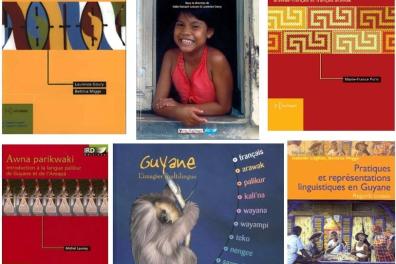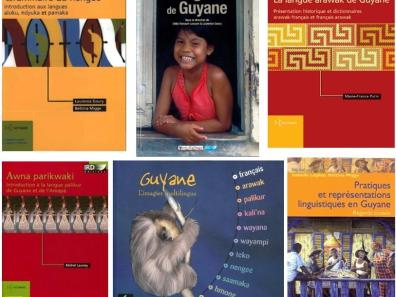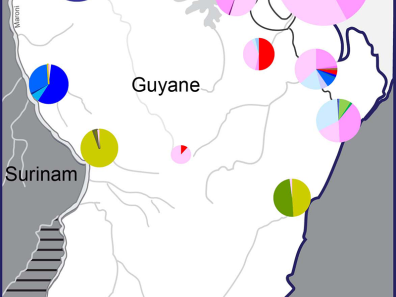Multilingualism and digital educational innovations in French Guiana

As a French territory in South America, French Guiana is fascinating for its linguistic and cultural diversity, which is proving to be a headache for public authorities.
Researchers at the SeDyL (Structure et Dynamique des Langues, UMR CNRS, INALCO, IRD) have a long history of involvement in French Guiana. It aims to respond to societal issues such as reducing inequalities in access to education through involved research. From 1995 onwards, the research priority was to describe local languages in order to bring them into schools, in response to local Creole and Amerindian claims about the importance of their languages and the disarray of the teaching profession in the face of massive school failure. The aim was to adapt the school to the languages spoken by the population.
The work of the linguists led, initially, to the description of ten native Amerindian and Creole languages and their grammatization: development of a script for languages with an oral tradition, grammars and dictionaries.

Then sociolinguistic surveys enabled us to describe the multilingualism of Guyanese society: some forty languages live side by side in very diverse configurations from one village to another, as can be seen on Map 1, which enabled us to discuss the language policies pursued in the school sector. The study of exchanges between teachers and students in the classroom also showed the importance of drawing on everyone's resources to communicate and learn better.

Constant dialogue with a wide range of stakeholders (ministries, education authorities, universities, local and national associations, groups of speakers) has led to the introduction of bilingual teaching programs: an experimental program in 1998, followed by the creation of a corps of professional bilingual teachers and the generalization of this program after the Cayenne agreements following social unrest in 2017. Training courses in bilingual or plurilingual teaching and specific courses have recently been created at Guyana's École supérieure du professorat et de l'éducation (ESPE).
These twenty or so years of research are currently leading to research dissemination projects funded by the Ministry of Culture, the Directorate of Cultural Affairs (DAC Guyane) or the Amazon Park: bilingual participatory dictionaries compiled by speakers, with the help of linguists and computer scientists, are being finalized for five Guianese languages and will soon be accessible on smartphones. The LINE - Langues et Innovations Numériques Educatives project - in collaboration with the Canopé network - will offer a platform bringing together all the results of research carried out over the last twenty years, language resources and bi- or multilingual teaching activities.
Films in particular are being made with a view to information and training. The 2018 documentary "Mots mêlés: une Guyane multilingue et plurilingue" is the first in a series. The film shows how people in French Guiana use elements of several languages to communicate on a daily basis. As children, in contact with others, they learn to mix languages and switch from one to another. This multilingual competence, still little exploited or valued at school, is very useful in professional situations, at the hospital, or in everyday life. This ability to switch from one language to another is revealed by an ethnographic approach and by the analysis of plurilingual exchanges. In particular, we see the communicative and social stakes involved in the use or non-use of the Other's language.
These concrete advances require long-term involvement in the field, and collaboration with numerous non-academic partners. They require adopting different scientific approaches (linguistics, sociolinguistics, didactic proposals, IT developments) and opening up numerous interdisciplinary dialogues.
Mixed words: a multilingual and plurilingual Guyana. A film by Armelle Exposito and Isabelle Léglise (2018): https://youtu.be/7H1zjsnDCrM
Thematic issue on the languages of Guyana (Langues et cités n°28, 2017): http://www.culture.gouv.fr/Thematiques/Langue-francaise-et-langues-de-France/Observation-des-pratiques-linguistiques/Langues-et-cite/Langues-et-cite-n-28-les-langues-de-Guyane
Website on languages spoken by schoolchildren in French Guiana: https://leglise.cnrs.fr/
Scientific contact : Isabelle Léglise, Research Director, CNRS, SeDyL (CNRS, INALCO, IRD). Research topics: Multilingualism, plurilingualism, French Guiana, Brazil, Suriname.
View e-mail